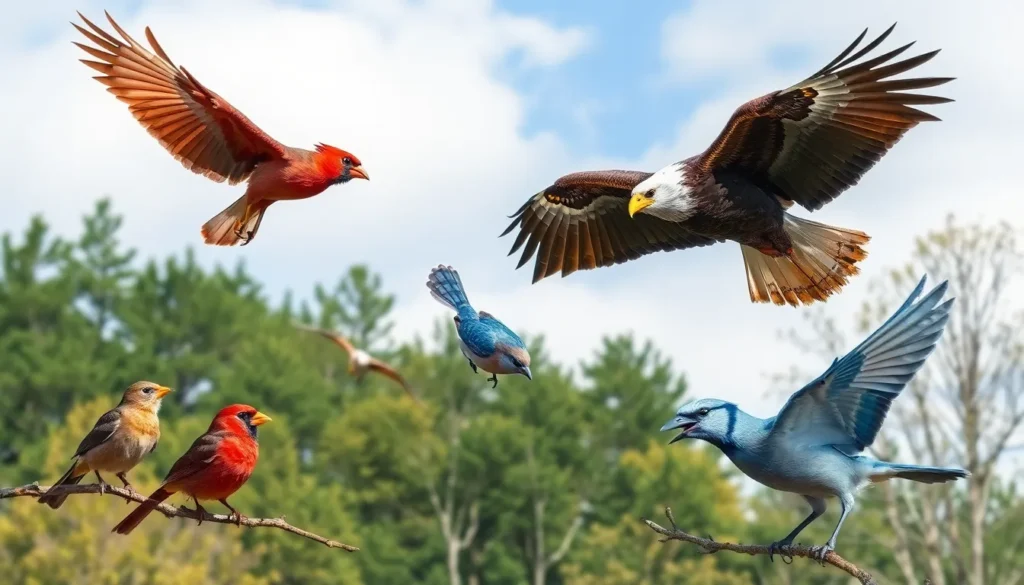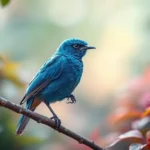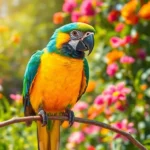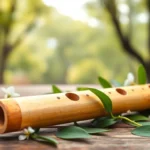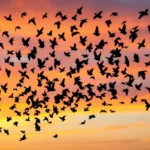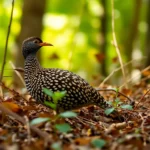Drawing birds can feel overwhelming when you’re staring at a blank page. We’ve all been there – trying to capture the graceful curve of a swan’s neck or the ever-changing energy of an eagle in flight without proper reference material. That’s where having reliable bird poses becomes your artistic lifeline.
Whether you’re a beginner sketch artist or seasoned illustrator, we know how crucial it is to have quality reference images at your fingertips. Bird anatomy and movement patterns are complex, and each species brings unique challenges that require careful study and practice.
We’ve compiled comprehensive bird pose references that’ll transform your artwork from stiff and awkward to fluid and lifelike. From perched songbirds to soaring raptors, these carefully curated references cover the essential poses every artist needs to master realistic bird drawings.
Understanding Basic Bird Anatomy for Accurate Pose Reference
Mastering bird anatomy fundamentals transforms your reference work from guesswork into precision. We’ll explore the essential structural elements that make bird poses authentic and believable.
Wing Structure and Positioning
Primary feathers create the wing’s outer edge and control flight direction during soaring and landing poses. These longest feathers extend from the wing tip and typically number 9-12 depending on the species. Secondary feathers attach to the forearm bone and provide lift during different flight positions.
Wing coverts layer over the flight feathers like overlapping shingles. Small coverts sit closest to the body while medium and greater coverts extend toward the wing’s leading edge. Alula feathers form a small thumb-like projection that helps birds maintain control during slow flight poses.
Folded wing positions tuck the primaries beneath the secondaries when birds perch or rest. Extended wing poses reveal the full feather structure with primaries spreading like fingers during takeoff and gliding positions.
Leg and Foot Placement
Perching foot structure follows an anisodactyl pattern with three toes facing forward and one backward toe providing grip strength. Songbirds like robins and sparrows demonstrate this classic toe arrangement in most reference poses.
Raptor feet feature powerful talons with curved claws designed for grasping prey during hunting poses. Eagles and hawks show zygodactyl arrangements where the outer toe can rotate backward for better grip control.
Wading bird legs extend proportionally longer than perching species to support standing poses in shallow water. Herons and egrets display this elongated leg structure when positioned in feeding or alert stances.
Walking gaits alternate between legs with toes spreading for balance on various surfaces. Ground feeders like pigeons and crows show distinct toe positioning when captured in walking reference poses.
Head and Neck Proportions
Skull proportions vary dramatically between species with raptors showing broader heads compared to their neck width. Songbirds maintain more uniform head to neck ratios while waterfowl display elongated skull shapes.
Beak positioning changes the entire head silhouette based on feeding behavior and alert status. Seed eating birds show shorter conical beaks while fish eaters display longer pointed bill structures in reference poses.
Neck flexibility allows birds to rotate their heads nearly 180 degrees in many species. Owls demonstrate extreme neck rotation while maintaining body position during hunting poses.
Eye placement determines the head’s profile view with prey species showing eyes positioned on skull sides for wider vision ranges. Predatory birds feature forward facing eyes that create distinct facial disc patterns in frontal reference poses.
Capturing Flight Poses: Wings in Motion
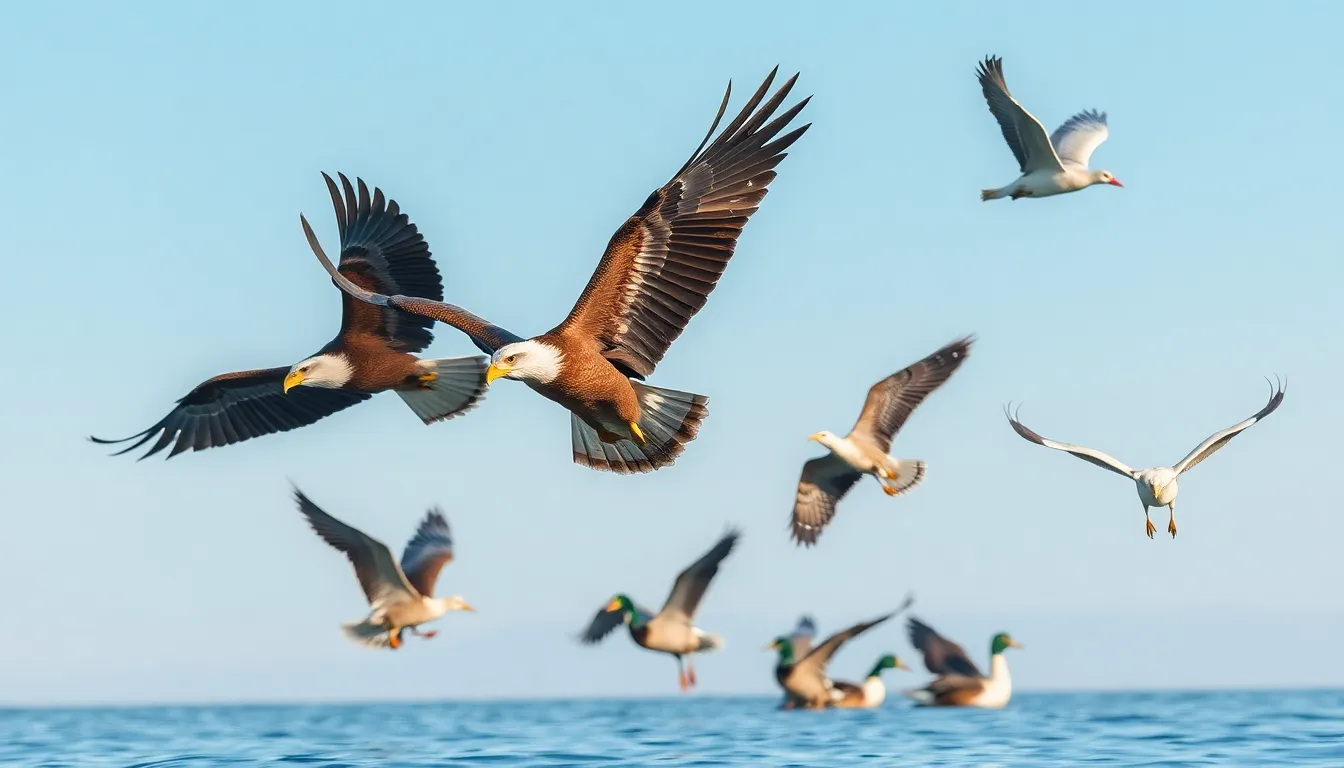
Flight poses showcase the most ever-changing aspects of bird behavior, requiring careful attention to wing positioning and body mechanics. We’ll explore essential reference poses that capture birds in their most expressive aerial moments.
Soaring and Gliding Positions
Soaring poses feature wings fully extended with primary feathers spread wide for maximum lift efficiency. Eagles and hawks demonstrate classic soaring stances with wings held horizontally and slightly upward tilted tips called dihedral angles. Turkey vultures maintain a distinctive V-shaped wing profile during thermal soaring, with their wings angled approximately 15-20 degrees above horizontal.
Large raptors like red-tailed hawks show wing loading patterns where outer primaries separate into distinct finger-like projections. Pelicans exhibit different soaring mechanics with their wings held straight and rigid, lacking the flexible primary separation seen in raptors. Albatrosses present unique ever-changing soaring references with extremely long, narrow wings that lock in position for extended gliding periods.
Gliding positions differ from soaring through subtle wing adjustments and body angles. Seabirds demonstrate shallow gliding descents with wings swept slightly back and primary feathers compressed together. Owls show broader wing profiles during gliding with softer feather edges that create silent flight characteristics.
Flapping Wing Sequences
Flapping sequences capture the complete wing stroke cycle from upstroke through downstroke positions. Small songbirds like finches demonstrate rapid wing beats with wings forming figure-eight patterns through each complete cycle. Hummingbirds showcase extreme flapping mechanics with wings rotating nearly 180 degrees at the shoulder joint during hovering flight.
Waterfowl present powerful flapping references with wings showing clear upstroke and downstroke phases. Ducks and geese display synchronized wing movements where both wings reach maximum extension simultaneously during the downstroke phase. Swans demonstrate slower, more deliberate flapping patterns with graceful wing curves throughout each stroke cycle.
Raptors exhibit different flapping characteristics with deeper wing strokes and longer glide phases between flaps. Falcons show rapid, shallow wing beats during high-speed pursuit flights, while larger hawks use slower, more powerful strokes for sustained flight. Crows and ravens present steady flapping patterns with consistent wing angles and timing that make excellent reference studies.
Landing and Takeoff Stances
Landing poses capture birds transitioning from flight to perched positions with wings positioned for maximum braking effectiveness. Waterfowl demonstrate classic landing stances with wings cupped forward, tail feathers fanned wide, and legs extended toward landing surfaces. Raptors show more vertical landing approaches with wings swept back and talons positioned for immediate prey capture or perch gripping.
Takeoff references illustrate the explosive power required for birds to become airborne from various starting positions. Ground-dwelling birds like quail show rapid wing acceleration with bodies angled upward and legs pushing off from substrate surfaces. Songbirds demonstrate quick takeoff mechanics with wings spreading rapidly while maintaining compact body positions for efficient acceleration.
Water birds present unique takeoff challenges requiring extended runway distances and powerful leg propulsion. Swans and pelicans show gradual acceleration phases with wings building momentum through several preliminary strokes before achieving sustained flight. Diving birds like cormorants exhibit different takeoff mechanics adapted for their exact hunting environments and body structures.
Mastering Perching Bird Poses Reference
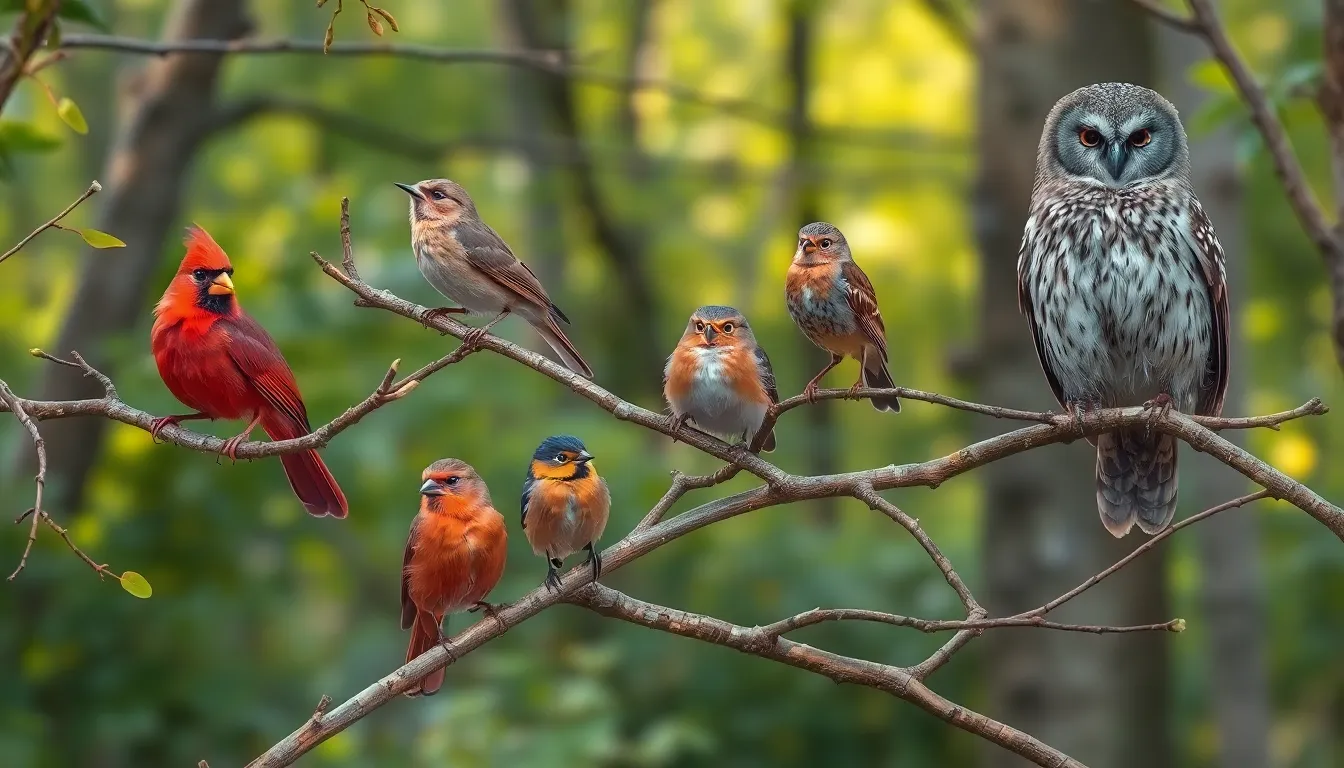
Perched birds offer some of the most accessible and detailed reference opportunities for artists looking to perfect their avian illustrations. We’ll explore the essential perching positions that form the foundation of realistic bird artwork.
Single Branch Perching
Single branch poses showcase the natural balance and grip mechanics that make birds such skilled perchers. Cardinals demonstrate perfect three-point contact with their strong feet wrapped around thin branches while maintaining upright posture. Robins exhibit the classic sideways perch with one foot placed higher than the other for stability on uneven surfaces.
Finches position themselves with their bodies angled slightly forward when actively feeding or scanning for threats. Owls maintain a more vertical stance with their talons fully extended and gripping the branch from above and below. Woodpeckers use their tail as a third point of contact against tree bark while their feet provide the primary anchoring force.
Songbirds like wrens keep their tails cocked upward at various angles depending on their alertness level. Crows and ravens spread their feet wider apart on thicker branches to accommodate their larger body mass. Hummingbirds require the most delicate perching references since their tiny feet barely wrap around the thinnest twigs.
Ground Standing Positions
Ground standing birds display entirely different posture mechanics compared to their perching counterparts. Chickens walk with their heads bobbing forward and backward in rhythm with their steps while keeping their bodies relatively level. Pigeons strut with their chests pushed forward and their heads held high in confident urban environments.
Sparrows hop with both feet together rather than walking in alternating steps like larger ground birds. Crows stride with long deliberate steps while keeping their wings slightly away from their bodies for quick takeoff readiness. Turkeys puff their feathers and fan their tails during display behaviors that create dramatic silhouettes.
Sandpipers probe the ground with their beaks extended downward while maintaining a horizontal body position. Geese stand tall on their legs with necks extended upward for maximum visibility across open areas. Quail crouch low to the ground with their rounded bodies creating compact defensive postures.
Multiple Bird Groupings
Bird groupings create complex compositions that require understanding of social hierarchies and spacing patterns. Flocks of starlings maintain consistent distances between individuals while moving as unified formations across power lines. Swallow colonies organize themselves with dominant pairs claiming the best perching spots while subordinate birds fill in the remaining spaces.
Geese arrange themselves in V formations even when perched together on logs or shorelines. Crow families cluster tightly together during roosting periods with juveniles positioned between protective adults. Finch flocks create seemingly random but actually organized feeding arrangements where each bird maintains its personal space bubble.
Mixed species groupings follow exact patterns where larger birds like hawks claim the highest and most prominent perches. Smaller birds like chickadees and nuthatches occupy the middle branches while ground feeders like juncos work the lower levels. Waterfowl organize themselves by species with ducks, geese and herons maintaining separate but parallel arrangements along shorelines.
Drawing Feeding and Foraging Poses
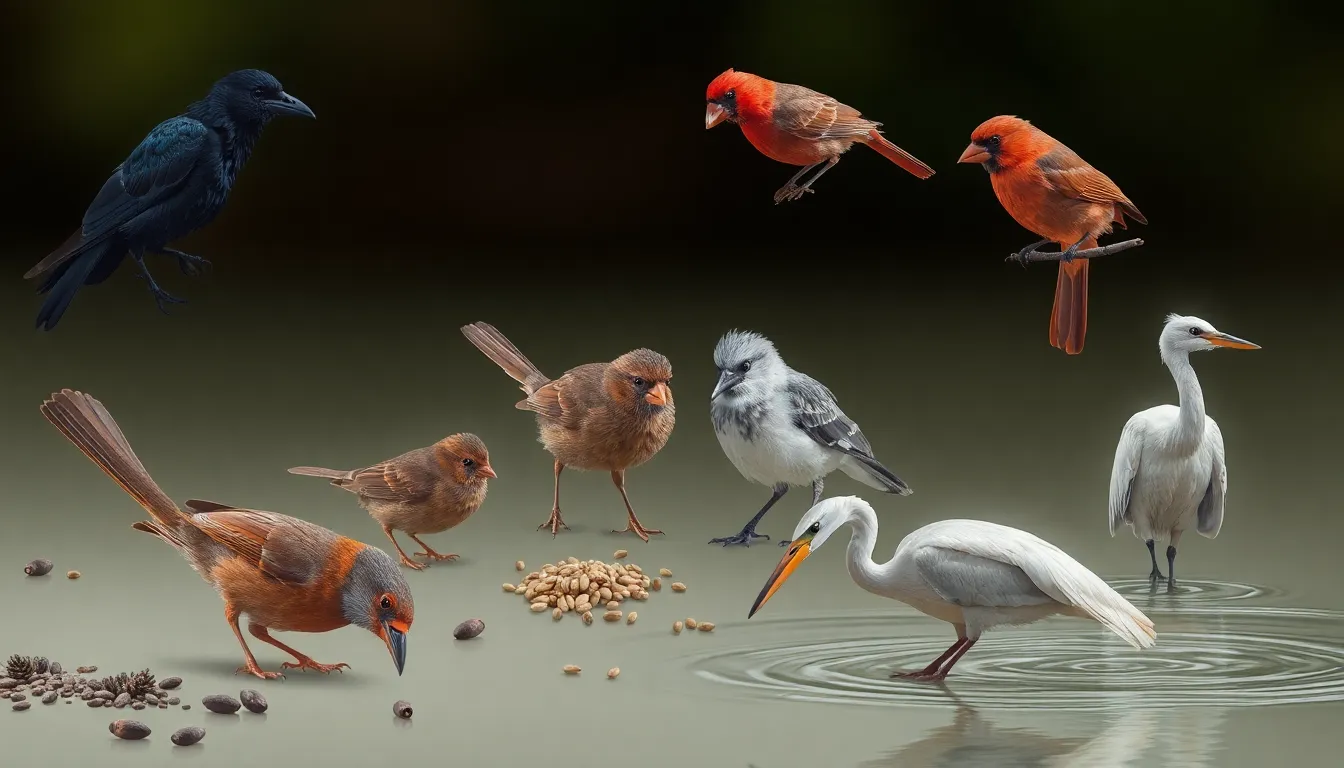
Feeding behaviors reveal some of the most natural and captivating bird poses we can capture in our artwork. These authentic positions showcase the distinctive characteristics of different species while they’re focused on survival activities.
Pecking and Ground Feeding
Ground feeding poses demonstrate birds in their most vulnerable yet determined states as they search for insects, seeds, and small prey items. Robins exhibit the classic head-down posture with their beaks nearly touching the ground while their tails point upward at a 45-degree angle. Crows and ravens display more cautious feeding positions with their bodies positioned sideways and one eye constantly watching for threats.
Scratching movements create ever-changing reference poses where birds use their feet to uncover hidden food sources beneath leaves and debris. Sparrows perform rapid back-and-forth scratching motions with both feet while maintaining balance through slight wing adjustments. Towhees showcase more pronounced scratching behaviors with their bodies lowered close to the ground and their wings slightly spread for stability.
Head positioning varies significantly between species during ground feeding activities. Blackbirds tilt their heads at sharp angles to better hear underground insects moving through the soil. Pigeons bob their heads rhythmically while walking and pecking, creating a characteristic forward-and-back motion that’s essential for accurate pigeon references.
Seed Cracking Positions
Perched seed cracking requires birds to maintain balance while manipulating food items with precision and strength. Cardinals demonstrate the classic seed cracking pose with their powerful beaks positioned perpendicular to tree branches while their feet grip firmly to counteract the force needed to break tough seed shells. Finches showcase more delicate seed handling techniques with their heads tilted and beaks working at various angles depending on seed size.
Foot positioning becomes crucial during seed manipulation as birds often hold larger seeds steady with their feet. Nuthatches wedge seeds into bark crevices and position their bodies at steep angles to gain leverage for cracking tough shells. Blue jays display aggressive seed cracking postures with their entire bodies engaged in the process, often stretching their necks forward for maximum force application.
Wing positioning during feeding creates subtle but important reference details that add authenticity to our bird drawings. Chickadees keep their wings slightly loose and ready for quick escape while cracking sunflower seeds at bird feeders. Woodpeckers brace themselves against tree trunks with their tails while using both feet and beaks to process nuts and seeds.
Water Drinking Stances
Tilting back positions create some of the most graceful and distinctive bird poses as most species must lift their heads to allow water to flow down their throats. Songbirds like warblers and wrens demonstrate the classic drinking posture with their beaks dipped into water sources and their necks extended upward at sharp angles. Doves and pigeons can drink with their heads down due to their unique ability to suck water rather than scoop and tilt.
Edge perching requires birds to balance carefully while accessing water from streams, puddles, and birdbaths. Goldfinches often perch on thin reeds or grass stems that bend under their weight, creating elegant curved lines in our reference poses. Larger birds like mockingbirds position themselves on more stable perches but must lean forward significantly to reach water surfaces.
Wading positions offer ever-changing references for water birds as they move through shallow areas while drinking and feeding simultaneously. Herons display patient stalking postures with their necks coiled and ready to strike at fish while occasionally dipping their beaks for quick drinks. Sandpipers create rapid movement references as they run along shorelines, stopping briefly to drink from tidal pools and wet sand areas.
Creating Dynamic Action Poses
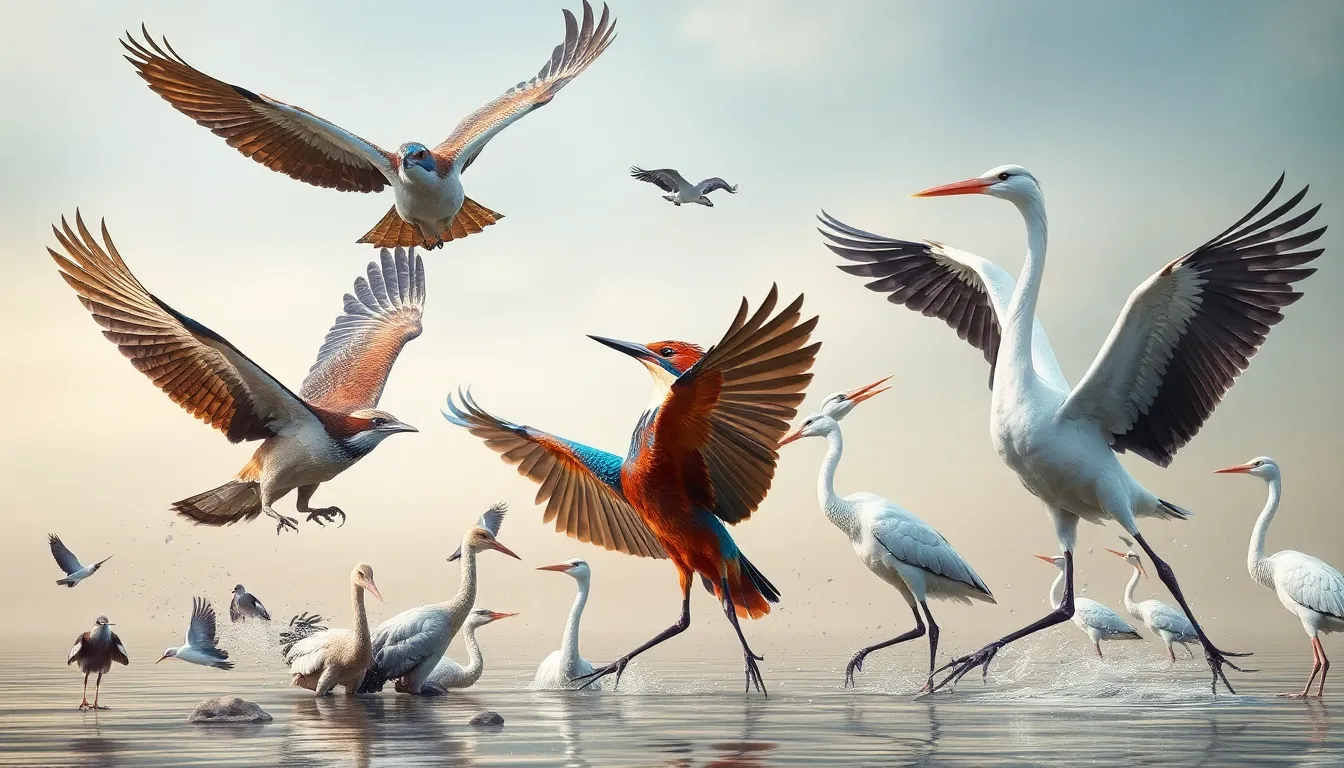
Capturing birds in high energy moments creates compelling artwork that showcases their natural behaviors and instincts. We’ll explore three categories of ever-changing action poses that demonstrate birds at their most expressive and physically demanding.
Hunting and Diving Positions
Raptors demonstrate intense focus during hunting sequences that create dramatic reference opportunities. Hawks position their bodies in steep diving angles with wings partially folded and talons extended forward. We observe peregrine falcons achieving vertical drops exceeding 200 mph with their wings tucked tightly against streamlined bodies.
Fishing birds execute precise water entry techniques that showcase athletic prowess. Ospreys hover momentarily before plunging feet first with wings spread wide for balance control. Kingfishers perform headfirst dives from perched positions with their bills leading the entry point. We see pelicans creating spectacular splashes as they dive bomb schools of fish with their massive bills opened wide.
Owls hunt with silent precision that produces unique pose references. Barn owls extend their legs forward while keeping wings spread horizontally during final approach sequences. Great horned owls demonstrate powerful talon strikes with wings pulled back and bodies compressed for maximum impact force.
Territorial Display Poses
Songbirds establish dominance through aggressive posturing that creates visually striking references. Male cardinals puff their chest feathers while raising their crests and spreading their tails in fan formations. We capture red winged blackbirds with wings partially extended and bills pointed upward in classic threat displays.
Water birds perform elaborate territorial rituals that showcase their impressive size and wing spans. Great blue herons stretch their necks to full extension while raising their wings in intimidating arch positions. Canada geese lower their heads close to ground level with wings held slightly away from their bodies in aggressive stances.
Raptors defend their hunting grounds with powerful displays that demonstrate their physical capabilities. Bald eagles spread their wings to full eight foot spans while tilting their heads back and opening their bills. We document red tailed hawks with their wings raised high above their bodies and their chest feathers fluffed to maximum size.
Mating Dance References
Cranes execute synchronized choreography that creates elegant reference material for artists. Sandhill cranes leap vertically with wings extended and necks stretched upward in joyful celebration poses. We observe pairs moving in mirror image formations with heads bobbing and wings fluttering in rhythmic patterns.
Peacocks display their magnificent plumage in courtship rituals that showcase nature’s artistry. Males fan their tail feathers in perfect semicircles while positioning their bodies to catch optimal lighting angles. We capture the intricate eye patterns and iridescent colors as they shake their plumage and strut in circular patterns.
Waterfowl perform aquatic courtship dances that demonstrate grace and athleticism. Male mallards arch their necks backward while lifting their bodies partially out of water in impressive vertical positions. Wood ducks bob their crested heads while spreading their wings in synchronized swimming patterns that create ever-changing movement references.
Studying Resting and Sleeping Bird Positions
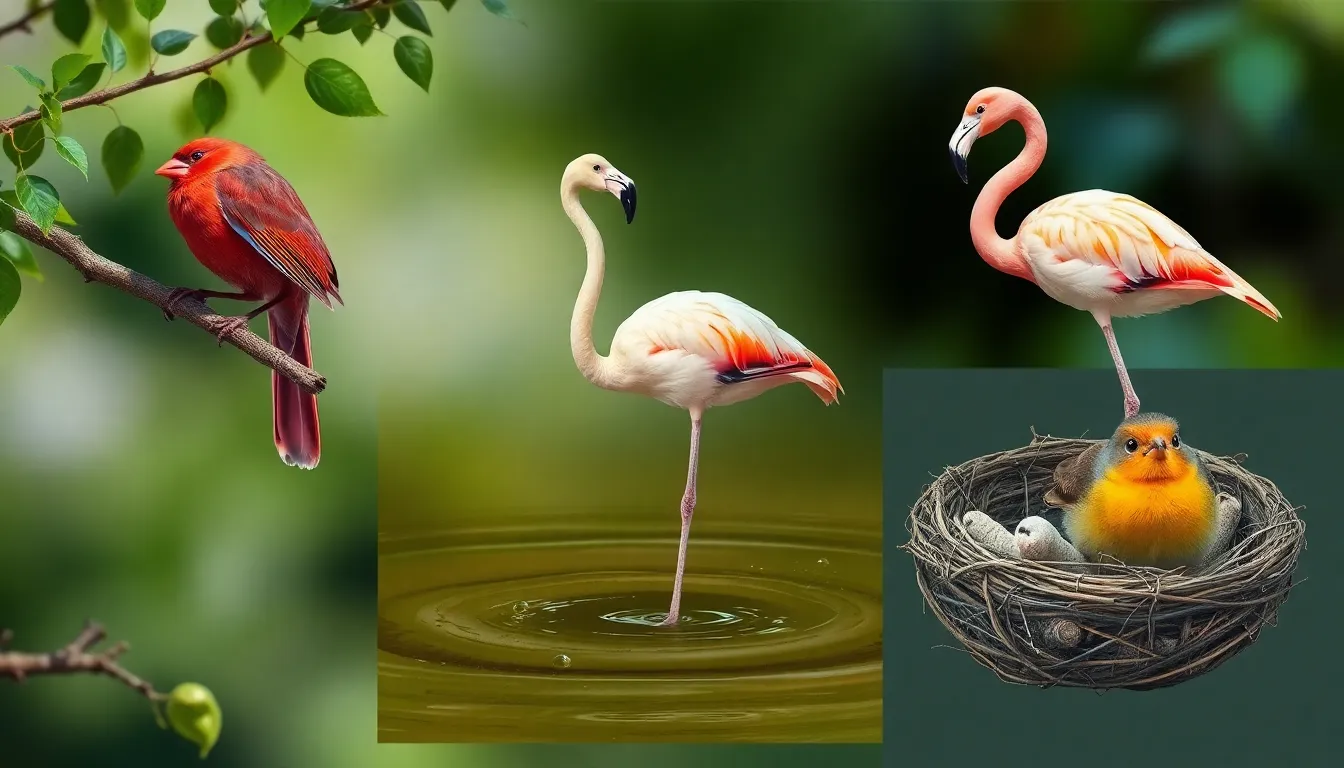
Understanding how birds position themselves during rest provides essential references for creating serene and naturalistic artwork. We’ll explore the subtle yet distinctive poses that birds adopt when they’re conserving energy and preparing for sleep.
Tucked Wing Resting Poses
Tucked wing positions showcase birds in their most comfortable and energy-efficient states. Cardinals and blue jays demonstrate classic wing tucking by folding their wings tightly against their bodies while perched on branches. The primary feathers nestle beneath the secondary feathers, creating smooth, streamlined silhouettes that reduce heat loss.
Waterfowl like ducks and geese exhibit distinctive resting poses along shorelines. Their wings fold in overlapping layers, with the wing tips crossing slightly over their backs. Mallards often tuck their heads partially under one wing while maintaining alertness through one visible eye.
Sleeping songbirds adopt the most compact tucked positions during nighttime hours. Robins and sparrows pull their heads down into their shoulders, creating rounded, ball-like shapes that conserve maximum body heat. Their tail feathers fan slightly outward for balance while their wings wrap around their torso like natural blankets.
One-Legged Standing
One-legged standing represents one of the most recognizable bird resting behaviors. Flamingos master this pose by lifting one leg completely into their belly feathers while balancing effortlessly on the other. This position reduces heat loss through their unfeathered legs and demonstrates remarkable muscular control.
Herons and egrets frequently adopt one-legged stances during patient hunting sessions. Great blue herons can maintain this position for extended periods, with their lifted leg tucked high against their body while their neck remains in an S-curve ready to strike. The supporting leg locks in place through specialized tendons that require no muscular effort.
Shorebirds like sandpipers and plovers use one-legged resting between feeding bursts. These smaller birds often alternate legs regularly, lifting one while tucking it into their warm belly feathers. Their compact bodies and relatively long legs create distinctive triangular silhouettes when viewed from the side.
Nest Sitting Positions
Nest sitting positions vary dramatically based on bird species and nest construction. Robins settle deep into their cup-shaped nests with their bodies conforming to the circular shape, while their tails extend upward at slight angles. Their wings rest naturally at their sides, often with wing tips crossing over their backs.
Raptors demonstrate different nest sitting postures in their larger stick platforms. Eagles and hawks spread their bodies wider to cover multiple eggs or chicks, with their powerful talons gripping nest edges for stability. Their head positions remain alert and elevated, constantly scanning for threats while maintaining protective stances over their young.
Ground-nesting birds like killdeer adopt low, flattened profiles in their scrape nests. These birds press their bodies close to the ground with their necks extended forward and their tails fanned slightly for balance. Their mottled feathers blend seamlessly with surrounding vegetation, creating natural camouflage that artists can reference for realistic ground-level compositions.
Working with Different Bird Types and Sizes
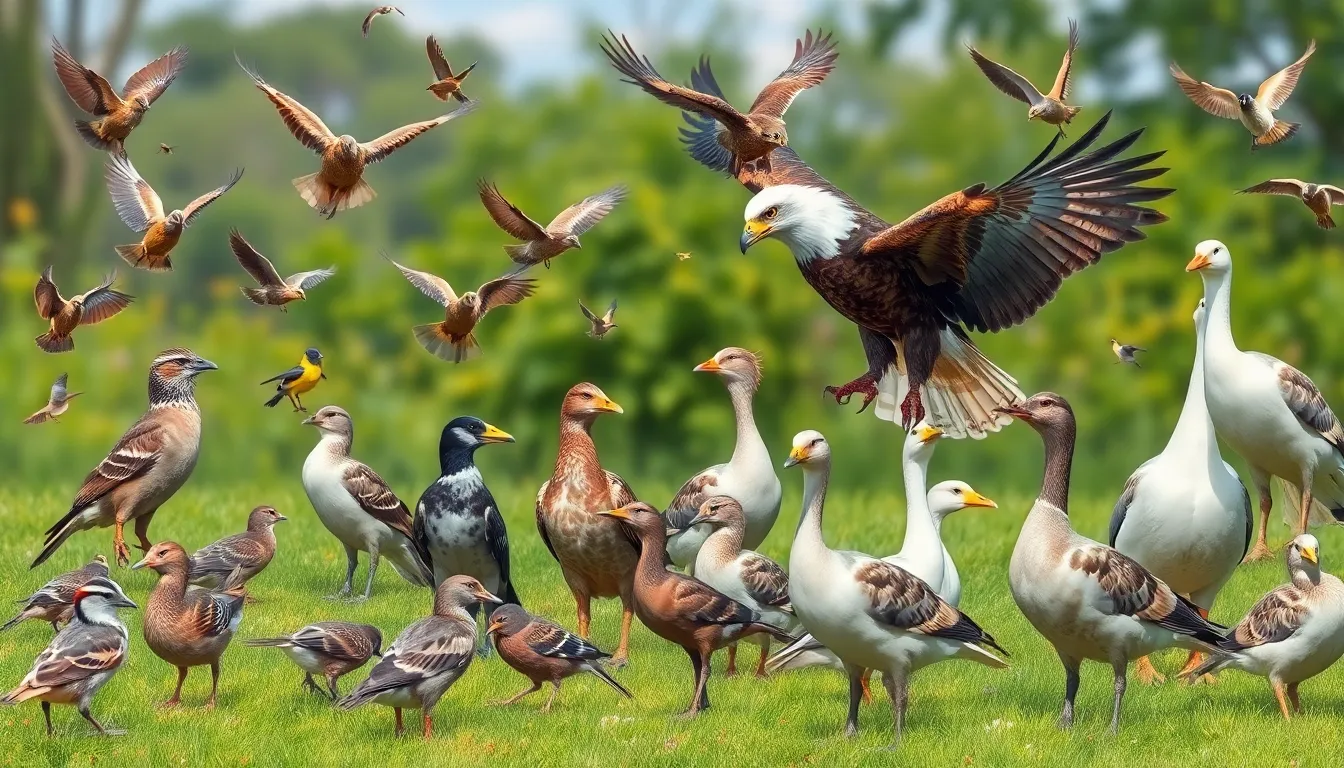
Understanding how bird size and species affect pose variations will elevate your reference work to professional standards. Each bird category presents unique anatomical challenges that require exact attention to proportion and movement patterns.
Small Songbird References
Compact body proportions define how we approach small songbird poses, with head to body ratios typically measuring 1:3 in species like chickadees, wrens, and finches. Their lightweight frames create distinctive perching angles where tiny legs support rounded bodies at steep 45 degree angles.
Quick movement patterns characterize songbird behavior, requiring us to capture split second poses like the robin’s head cock listening for worms or the cardinal’s alert stance with raised crest feathers. These birds shift positions every 2-3 seconds, making freeze frame references essential for accurate depiction.
Wing to body scaling shows dramatic differences from larger birds, with wingspans measuring only 6-10 inches across in most species. Folded wings create clean lines along the body, while extended wings reveal intricate feather layering that appears more delicate than raptor plumage.
Tail positioning varies significantly among songbird species, from the upright stance of wrens to the long streaming tails of magpies. Sparrows hold their tails at neutral angles, while mockingbirds fan theirs wide during territorial displays.
Large Raptor Poses
Powerful body structure dominates raptor references, with eagles and hawks displaying chest measurements 3-4 times broader than their head width. Their muscular builds create imposing silhouettes whether perched on branches or standing on ground prey.
Wing span proportions reach impressive scales in large raptors, with golden eagles extending wings up to 7.5 feet across and red tailed hawks measuring 4 feet tip to tip. These massive wings create dramatic pose opportunities during landing sequences and territorial displays.
Hunting postures showcase the athletic capabilities of raptors through intense focus positions like the peregrine falcon’s pre dive crouch or the osprey’s hovering stance above water. Their keen eyes track movement while maintaining perfect balance on powerful talons.
Perching mechanics differ substantially from songbirds, as raptors require thicker branches and more stable platforms to support their 2-15 pound body weights. Great horned owls demonstrate classic raptor perching with their upright stance and forward leaning alertness.
Waterfowl Positioning
Buoyant body design creates unique pose challenges in waterfowl, with ducks and geese displaying streamlined profiles that sit naturally on water surfaces. Their waterproof feathers compress differently than land bird plumage, creating smooth body contours.
Swimming mechanics reveal specialized anatomy through poses like the mallard’s paddling position with webbed feet propelling underwater while maintaining elegant surface gliding. Swans demonstrate graceful neck curves that extend their total body length by 30-40 percent.
Diving sequences capture ever-changing waterfowl behavior as loons and grebes disappear beneath surfaces in sleek torpedo shapes. These birds compress their feathers and streamline their bodies to reduce water resistance during underwater hunting.
Landing approaches on water surfaces show unique wing and body coordination as geese extend their feet forward like landing gear while using their wings as air brakes. Pelicans demonstrate spectacular crash landing poses with wings spread wide and pouches extended for fish catching.
Using Photography and Video for Bird Poses Reference
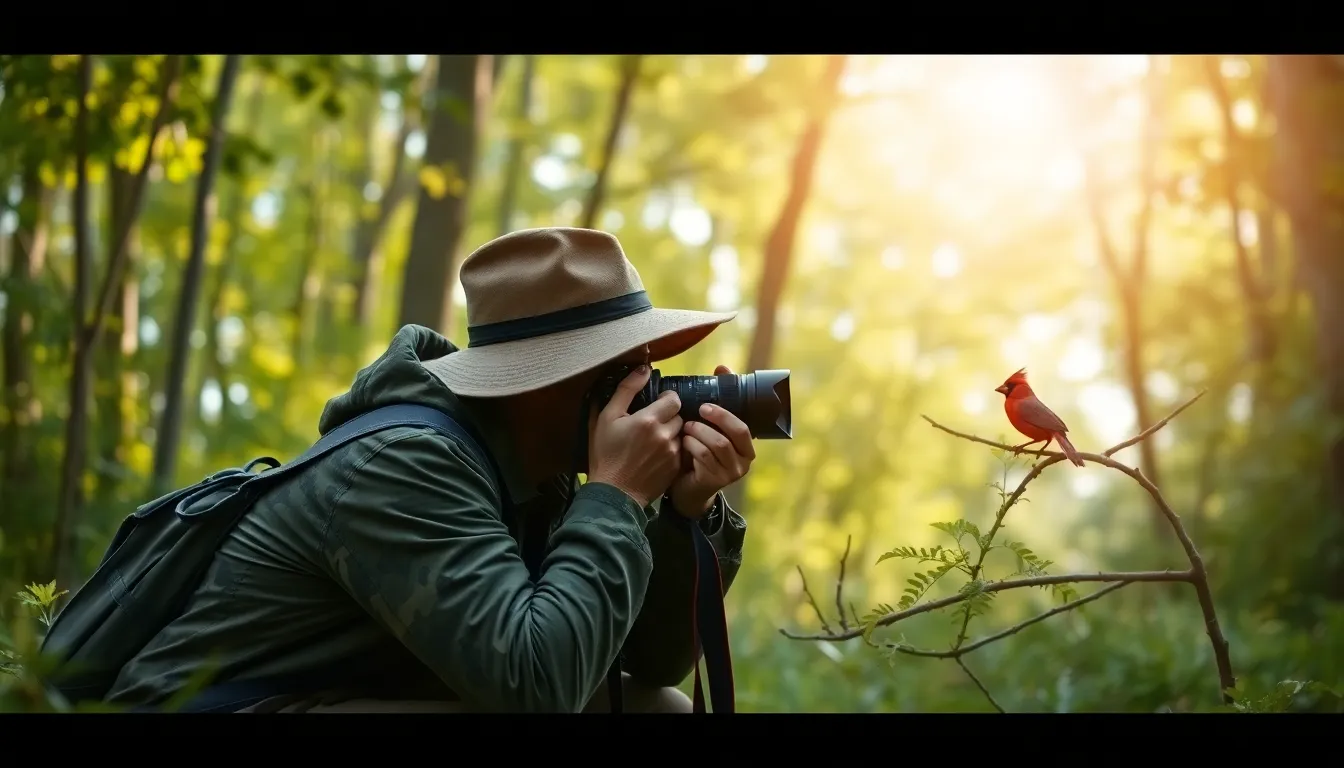
Photography and video capture provide the most accurate references for studying bird poses in real-industry conditions. We’ll explore the technical aspects and timing strategies that produce exceptional reference material for artistic work.
Best Times for Bird Photography
Early morning hours between 6 AM and 9 AM offer optimal lighting conditions and peak bird activity levels. Dawn feeding periods showcase natural foraging behaviors, with robins pulling worms and finches cracking seeds in soft golden light. We find that overcast days eliminate harsh shadows while maintaining even illumination across feather details.
Late afternoon sessions from 4 PM to 7 PM capture different behavioral patterns as birds prepare for evening roosts. Cardinals and blue jays exhibit territorial displays during these hours, providing ever-changing action references. Spring and fall migration seasons multiply photo opportunities, with warblers and thrushes appearing in greater numbers and variety.
Winter months reveal unique pose variations as birds adapt to cold weather conditions. Chickadees and nuthatches demonstrate fluffed feather positions that create rounded silhouettes. Snow backgrounds simplify compositions while highlighting bird forms and natural positioning.
Camera Settings and Equipment
Telephoto lenses ranging from 300mm to 600mm allow comfortable shooting distances without disturbing natural bird behaviors. We recommend fast shutter speeds of 1/1000s or higher to freeze wing movements and capture sharp feather details. Aperture settings between f/5.6 and f/8 provide adequate depth of field while maintaining crisp focus on the bird’s body.
ISO performance becomes crucial during early morning and late afternoon sessions when natural light levels drop. Modern cameras handle ISO 1600 to 3200 effectively, preserving image quality for reference purposes. Continuous autofocus modes track moving subjects, ensuring sharp images during takeoff and landing sequences.
Tripods with fluid heads stabilize long telephoto lenses and reduce camera shake during extended observation sessions. Remote shutter releases minimize vibration, particularly important for macro shots of smaller songbirds. Battery grips extend shooting time during lengthy field sessions when birds exhibit extended behavioral patterns.
Building Your Reference Library
Digital organization systems categorize poses by species, behavior type, and seasonal variations. We create separate folders for flight phases, perching positions, feeding behaviors, and social interactions. Tagging systems include lighting conditions, background types, and exact anatomical features visible in each shot.
Video sequences capture complete movement cycles that individual photographs cannot provide. Wing beat patterns, landing approaches, and takeoff sequences reveal transitional poses between static positions. Slow motion capabilities at 120fps or higher break down rapid movements into frame-by-frame references.
Field sketching complements photographic references by recording observations that cameras might miss. Quick gesture drawings capture the essence of poses while detailed studies focus on proportional relationships and anatomical accuracy. Weather conditions, time stamps, and behavioral notes enhance the reference value of both photographs and sketches.
Contact sheets and proof prints allow side-by-side comparison of similar poses from different angles. Multiple exposures of the same behavior reveal subtle variations in body positioning and feather arrangement. Print references remain accessible during drawing sessions without requiring digital device screens.
Common Mistakes to Avoid in Bird Pose Drawing
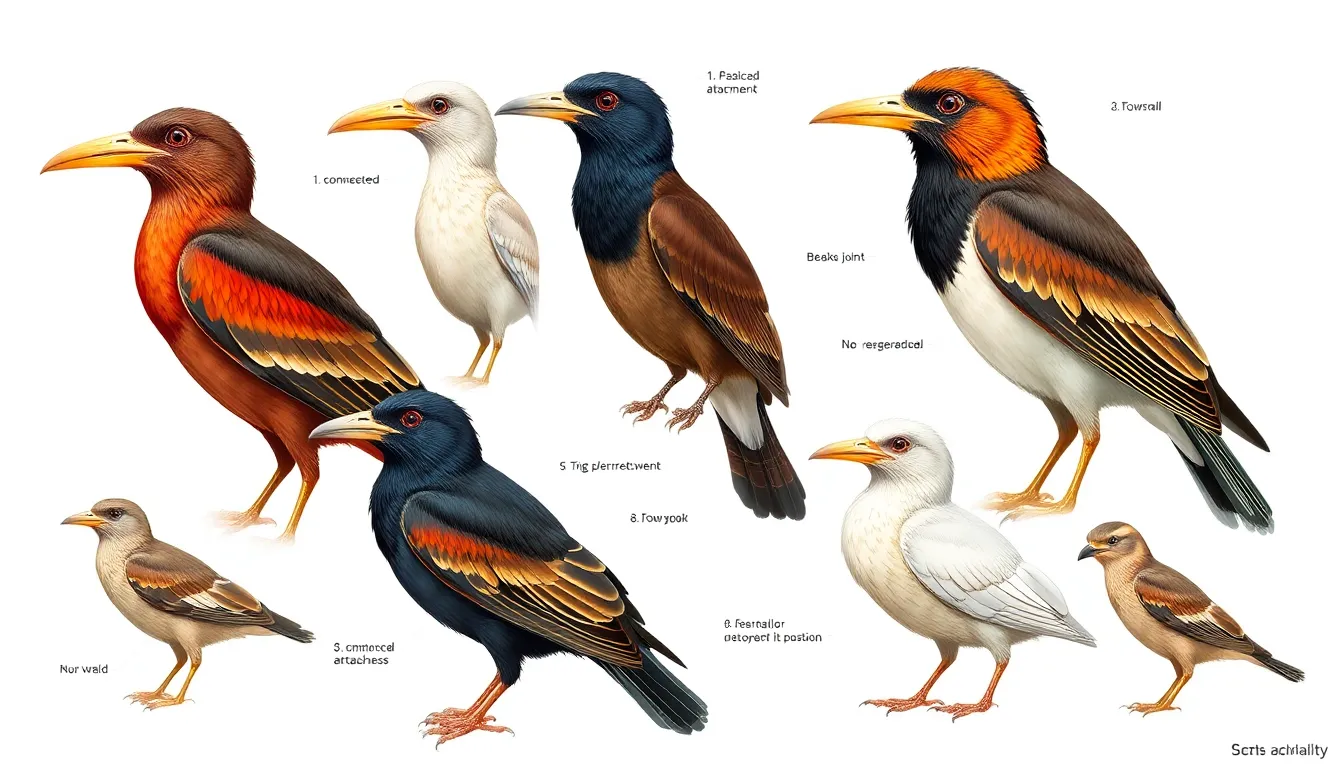
Even experienced artists can fall into common traps when drawing bird poses. We’ll explore the most frequent errors that can make your bird artwork look awkward or unrealistic.
Anatomical Errors
Misplaced joints create the most obvious anatomical mistakes in bird drawings. We often see artists placing the knee joint too high on the leg, forgetting that birds’ knees are hidden within their body cavity. The visible joint is actually the ankle, which bends in the opposite direction from human knees.
Incorrect beak attachment frequently occurs when artists treat the beak as a separate element stuck onto the head. We need to remember that the beak flows seamlessly from the skull, with the upper mandible connecting directly to the forehead area. Cardinals show this connection clearly, while hummingbirds demonstrate how the beak integrates with their streamlined head shape.
Wrong eye placement can instantly make a bird look unnatural or cartoon-like. We should position eyes on the sides of most songbirds’ heads, not facing forward like human eyes. Owls are the exception, with their forward-facing eyes creating their distinctive facial disc pattern.
Feet scaling errors happen when artists make talons too large for perching birds or too small for raptors. We observe that robin feet are delicate and proportional to their body size, while hawk talons are significantly larger and more powerful-looking.
Unnatural Wing Positions
Impossible wing angles occur when artists draw wings in positions that defy bird anatomy. We can’t show wings folded completely backward or stretched at angles that would break the bird’s shoulder joints. Eagle wings have exact folding patterns that we must respect to maintain realism.
Static wing positions in flight scenes make birds look frozen rather than ever-changing. We need to show the natural curve and flex of wings during different flight phases. Heron wings demonstrate beautiful S-curves during slow flight, while sparrow wings show rapid, angular movements.
Inconsistent feather direction breaks the visual flow of wing structure. We should ensure that primary feathers point toward the wing tip, while secondary feathers follow the wing’s trailing edge. Goose wings clearly show this feather arrangement during landing sequences.
Symmetrical wing errors happen when artists make both wings identical in flying poses. We rarely see birds with perfectly matching wing positions during natural flight. Ravens show excellent examples of asymmetrical wing positioning during turns and maneuvers.
Proportion Problems
Oversized heads make birds look juvenile or cartoon-like instead of mature and realistic. We need to study how head size relates to body mass in different species. Chickadee heads are proportionally larger than cardinal heads, but both maintain exact ratios to their body size.
Incorrect body-to-wing ratios create birds that look unable to fly or overly powerful for their size. We should remember that wingspan typically measures 1.5 to 2 times the bird’s body length in most songbirds. Albatross proportions show extreme wingspan-to-body ratios that demonstrate this principle.
Wrong leg length makes birds appear unstable or awkward in standing poses. We observe that heron legs are exceptionally long for wading, while robin legs are shorter and built for hopping. Each species has evolved exact leg proportions for their lifestyle.
Tail size mistakes affect the bird’s overall balance and flight capability appearance. We see how peacock tails are dramatically large during display, while wren tails are short and often held upright. Swallow tails show forked shapes that aid in aerial maneuverability.
Neck proportion errors occur when artists make necks too thick or thin for the bird’s head and body size. We need to study how swan necks are long and graceful, while owl necks appear almost nonexistent due to their fluffy feathers and compact build.
Conclusion
We’ve equipped you with the essential knowledge and techniques needed to master bird pose references in your artwork. From understanding fundamental anatomy to capturing ever-changing flight sequences these comprehensive guidelines will elevate your bird drawings to new levels of realism and authenticity.
Remember that consistent practice with quality references makes the difference between amateur sketches and professional artwork. Whether you’re working with small songbirds or majestic raptors the principles we’ve outlined will help you avoid common pitfalls while creating compelling bird illustrations.
Start building your reference library today and watch as your confidence in drawing birds soars. With these tools at your disposal you’re ready to tackle any avian subject with precision and artistic flair.
Frequently Asked Questions
What makes drawing birds so challenging for artists?
Birds present unique challenges due to their complex anatomy, diverse poses, and constant movement. Their wing structure involves intricate feather arrangements, while their lightweight build and varied proportions differ significantly from mammals. Without proper reference material, capturing their natural postures and dynamic movements becomes extremely difficult, often resulting in stiff or anatomically incorrect representations.
Why are quality bird pose references essential for improving artwork?
Quality references provide accurate anatomical details, natural posture variations, and behavioral insights that are impossible to capture from memory alone. They help artists understand wing mechanics, proper proportions, and species-specific characteristics. With good references, both beginners and experienced artists can create more fluid, lifelike bird representations that showcase authentic poses and movements.
What are the key anatomical elements to understand when drawing birds?
The three fundamental areas are wing structure (primary/secondary feathers, coverts, and alula), leg and foot placement (varying between perching birds, raptors, and waders), and head/neck proportions (including skull shapes, beak positioning, and eye placement). Understanding these structural elements ensures accurate pose references and authentic-looking bird artwork across different species.
How do flight poses differ between bird species?
Flight poses vary dramatically based on bird type and flying style. Eagles and pelicans use soaring positions with spread wings for maximum lift, while songbirds display rapid flapping sequences. Waterfowl have unique takeoff mechanics requiring explosive power, and raptors show distinct hunting dive positions. Each species has evolved specific wing positions and body angles optimized for their flight needs.
What should I focus on when drawing perching birds?
Master the three-point contact system where birds grip with their feet while maintaining balance. Study how different species vary their perching mechanics – cardinals use standard gripping, owls have wider stances, and woodpeckers use tail support. Pay attention to weight distribution, claw positioning, and how birds adjust their posture on different branch sizes and angles.
How can I accurately capture birds in feeding poses?
Observe how feeding behaviors create distinct poses – robins tilt head-down while ground feeding, cardinals balance precisely while seed cracking, and herons adopt dynamic stances while wading. Each feeding method produces specific body angles, neck extensions, and weight shifts. Study the relationship between beak shape, feeding style, and resulting body posture.
What equipment is best for photographing bird references?
Use telephoto lenses (at least 300mm) to capture birds without disturbing them, and fast shutter speeds (1/500s or faster) to freeze motion. Early morning and late afternoon provide optimal lighting and peak bird activity. Consider using burst mode for action sequences and maintain respectful distances to capture natural behaviors without causing stress.
What are the most common mistakes in bird pose drawing?
Anatomical errors include misplaced wing joints, incorrect beak attachment points, and wrong leg positioning. Proportion mistakes involve oversized heads, incorrect wing-to-body ratios, and improper scaling between species. Movement errors include stiff poses, impossible wing positions, and failure to show weight distribution. Understanding basic bird anatomy prevents these fundamental mistakes.
How do I organize and build an effective bird reference library?
Create digital folders organized by species, pose types, and behaviors. Combine high-quality photographs with field sketches to capture both detail and movement. Include multiple angles of the same pose and document lighting conditions. Regular field observation sessions help build a comprehensive collection covering various species, seasons, and behaviors.
What’s the difference between drawing small songbirds versus large raptors?
Small songbirds have compact proportions, quick movement patterns, and delicate features requiring attention to fine details. Large raptors display powerful body structures, impressive wingspans, and slower, more deliberate movements. Size affects everything from feather rendering to pose dynamics – songbirds show rapid position changes while raptors demonstrate sustained, powerful postures.

